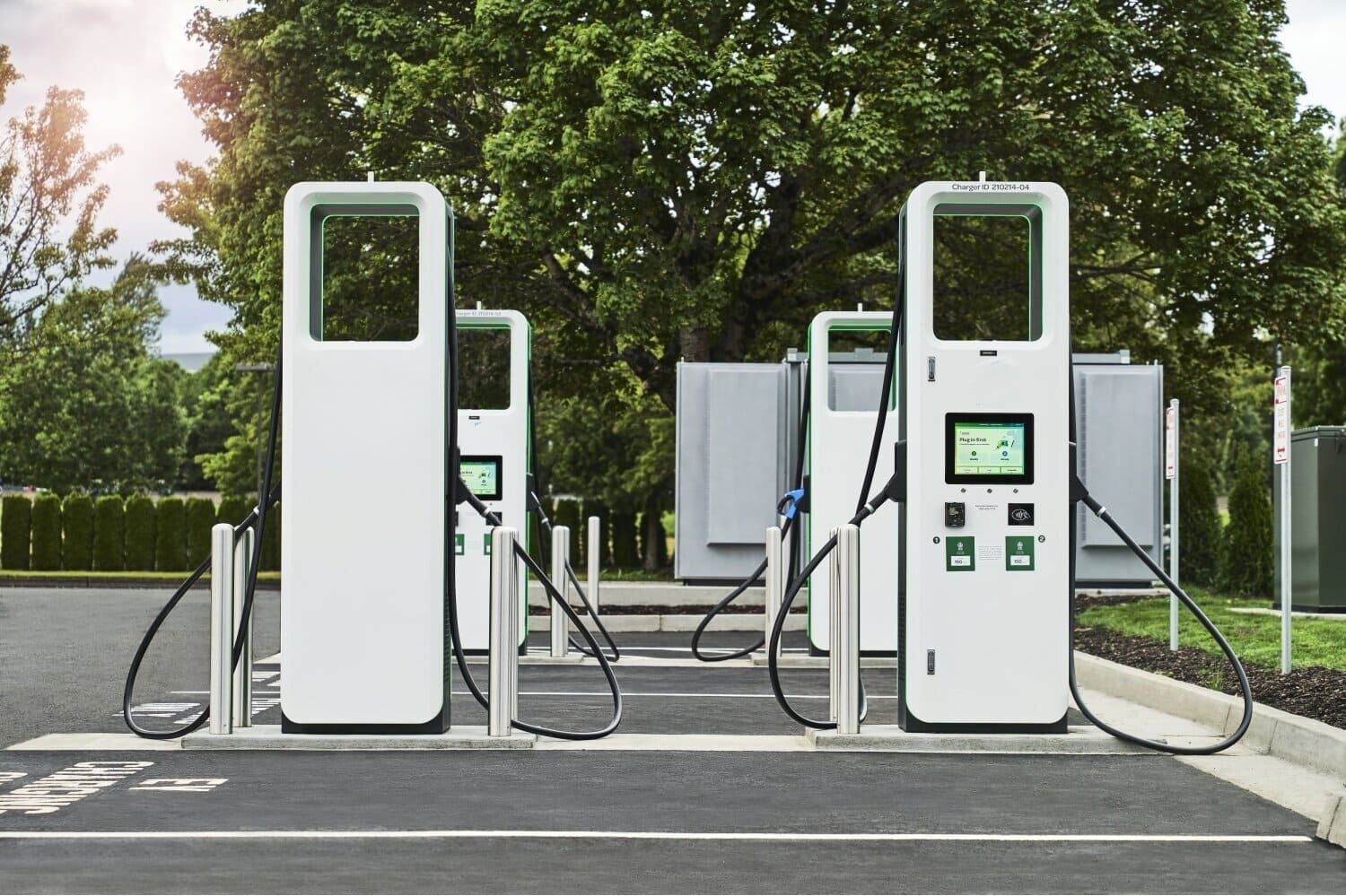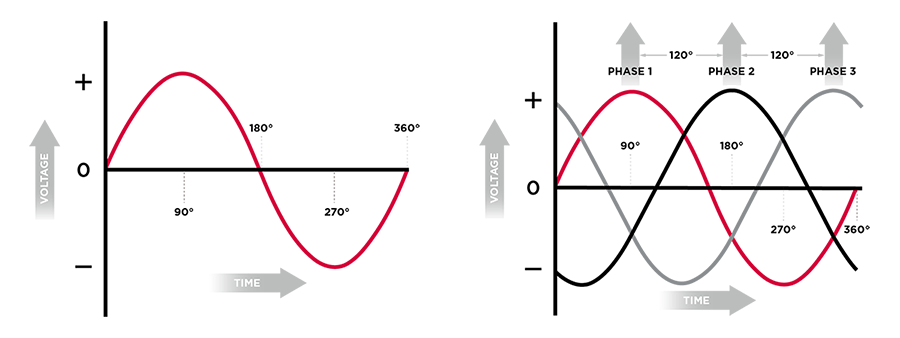In the world of electrical power, understanding the difference between single-phase and three-phase systems is crucial, especially when it comes to choosing the right type of equipment for various applications. Whether you're powering your home, business, or charging an electric vehicle (EV), the type of power supply can significantly impact efficiency, cost, and overall performance. This article will explore the key differences between single-phase and three-phase power, with a focus on their applications in EV chargers.

Single-phase power is the most common type of electrical power used in residential and light commercial applications. It operates using a single alternating current (AC) waveform, which oscillates between positive and negative cycles. This type of power supply is typically delivered through two wires: one live wire and one neutral wire.
In a single-phase system, the voltage reaches a peak value twice in each cycle, which results in a pulsating delivery of power. While this is sufficient for most household appliances and small businesses, it may not be ideal for high-power equipment or industrial applications due to its limited capacity.
Three-phase power is a more robust and efficient power delivery system commonly used in industrial and large commercial settings. Unlike single-phase power, three-phase power uses three alternating currents that are offset by 120 degrees from each other. This creates a continuous flow of power with less fluctuation, making it more suitable for heavy machinery and high-power equipment.
A three-phase system typically requires four wires: three live wires (one for each phase) and one neutral wire. The advantage of this setup is that it provides a more stable and reliable power supply, which can handle larger loads with greater efficiency.

Single-phase EV chargers are designed for residential use and are typically connected to a standard household power supply. These chargers operate on a single-phase power system, which limits their charging speed and efficiency compared to three-phase chargers. However, they are more than adequate for most EV owners, particularly those who charge their vehicles overnight.
The primary advantage of single-phase EV chargers is their simplicity and lower cost. They are easy to install and do not require any special wiring or electrical infrastructure. For most residential users, a single-phase charger provides a convenient and affordable way to keep their EVs charged and ready to go.
Three-phase EV chargers are designed for commercial use or for residential settings where faster charging is required. These chargers take advantage of the continuous power flow provided by a three-phase power system, allowing them to deliver higher charging speeds and greater efficiency.
In a commercial setting, three-phase EV chargers are often used in parking lots, charging stations, and other high-traffic areas where multiple vehicles need to be charged quickly. They are also becoming increasingly popular in residential settings where homeowners want the convenience of faster charging.
The main advantage of three-phase EV chargers is their ability to charge an EV more quickly, which is particularly beneficial for businesses or individuals with multiple electric vehicles or those who need to charge their vehicle quickly between uses.
When comparing single-phase and three-phase EV chargers, several key differences stand out:
Three-phase chargers offer significantly faster charging times due to their ability to deliver more power continuously. This makes them ideal for commercial settings or for residential users who need to charge their EVs quickly. Single-phase chargers, while slower, are sufficient for overnight charging at home.
Three-phase power is more efficient in delivering power, especially over long distances or when powering high-demand equipment. This efficiency translates into faster and more reliable charging for EVs. Single-phase chargers, while less efficient, are adequate for most residential needs.
Single-phase chargers are generally less expensive to purchase and install. They do not require any special wiring or infrastructure, making them a cost-effective option for most homeowners. Three-phase chargers, on the other hand, are more expensive due to the need for additional wiring and electrical infrastructure.
Single-phase chargers are best suited for residential use, where charging speed is less critical. Three-phase chargers are ideal for commercial settings or for residential users with high power demands or multiple vehicles.
When deciding between single-phase and three-phase EV chargers, it’s important to consider your driving habits and your home’s electrical capacity.
Start by evaluating how far you typically drive each day. For shorter commutes, a single-phase charger might be sufficient, especially if you have the convenience of overnight charging. Single-phase chargers are generally slower but can still meet the needs of most daily drivers who don’t require fast recharging. However, if your driving pattern includes long trips or frequent use, a three-phase charger could be more beneficial. These chargers are faster, allowing you to quickly recharge and hit the road again without long waiting times.
Before opting for a charger, assess your home’s electrical system. Most residential properties are equipped with single-phase power, which supports single-phase chargers. If you’re thinking about installing a three-phase charger, you might need to upgrade your electrical system, as three-phase power is typically found in larger commercial or industrial settings. To ensure your home can handle the added load, consult an electrician or a professional from a company like Skylar Solar. They can help assess your current electrical setup and determine if any upgrades are necessary for safe and efficient charger installation.
Ultimately, the choice between single-phase and three-phase charging depends on your driving habits and your home's capacity to support the desired setup. Whether you choose a single-phase charger for its simplicity or a three-phase charger for faster charging, ensure that it aligns with both your needs and your property’s electrical capabilities.
Understanding the difference between single-phase and three-phase power is essential when choosing the right type of EV charger for your needs. Single-phase chargers offer a cost-effective and straightforward solution for most residential users, while three-phase chargers provide the speed and efficiency needed for commercial settings or high-demand residential applications. By considering your specific needs and the power infrastructure available, you can make an informed decision that ensures your EV is always charged and ready to go.
